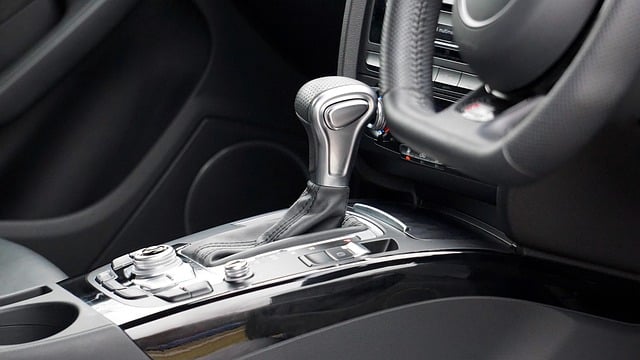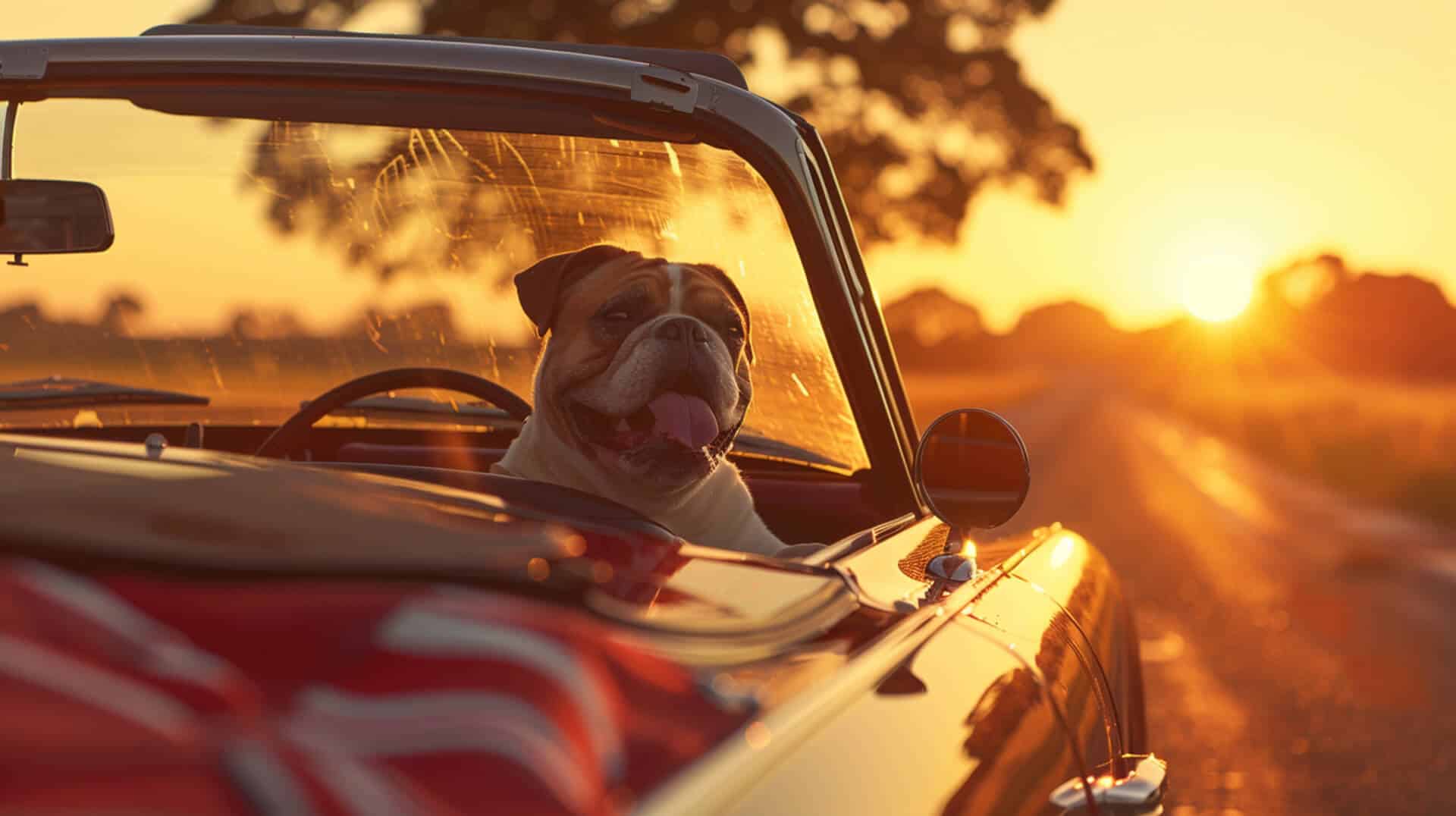
Understanding UK Laws on Driving with Dogs
When you’re embarking on the journey to become a licenced driver in the UK, it’s crucial to understand not only the rules of the road but also the regulations surrounding driving with pets, such as dogs. At Smart Drive UK, we recognise the importance of ensuring both your safety and that of your furry companions during car travel.
Legal Requirements for Driving with Dogs in the UK
The UK law mandates that any pet inside a vehicle must be properly restrained. This is to prevent them from causing distractions or injuries in case of a sudden stop. Specifically, the Highway Code Rule 57 suggests that dogs should be secured with a seat belt harness, pet carrier, dog cage, or dog guard. Failure to comply with these regulations can result in fines and points on your driving licence, emphasising the importance of adhering to these laws, especially as a learner driver.
Impact on Safety
Properly restraining your dog not only adheres to legal requirements but also significantly enhances the safety of both the driver and the pet. An unrestrained dog can become a major distraction or even a projectile in the event of an accident, leading to serious injuries.
Staying Informed
For the most current and comprehensive information on pet travel regulations, we recommend consulting the official government website or the Highway Code. These resources are regularly updated to reflect any changes in legislation, ensuring that you remain compliant and informed.
At Smart Drive UK, we are committed to promoting safe driving practices, which include the responsible and legal transportation of pets. By understanding and adhering to the UK laws on driving with dogs, you’re taking an important step towards ensuring a safe and enjoyable journey for everyone in the vehicle.
Choosing the Right Restraint for Your Dog
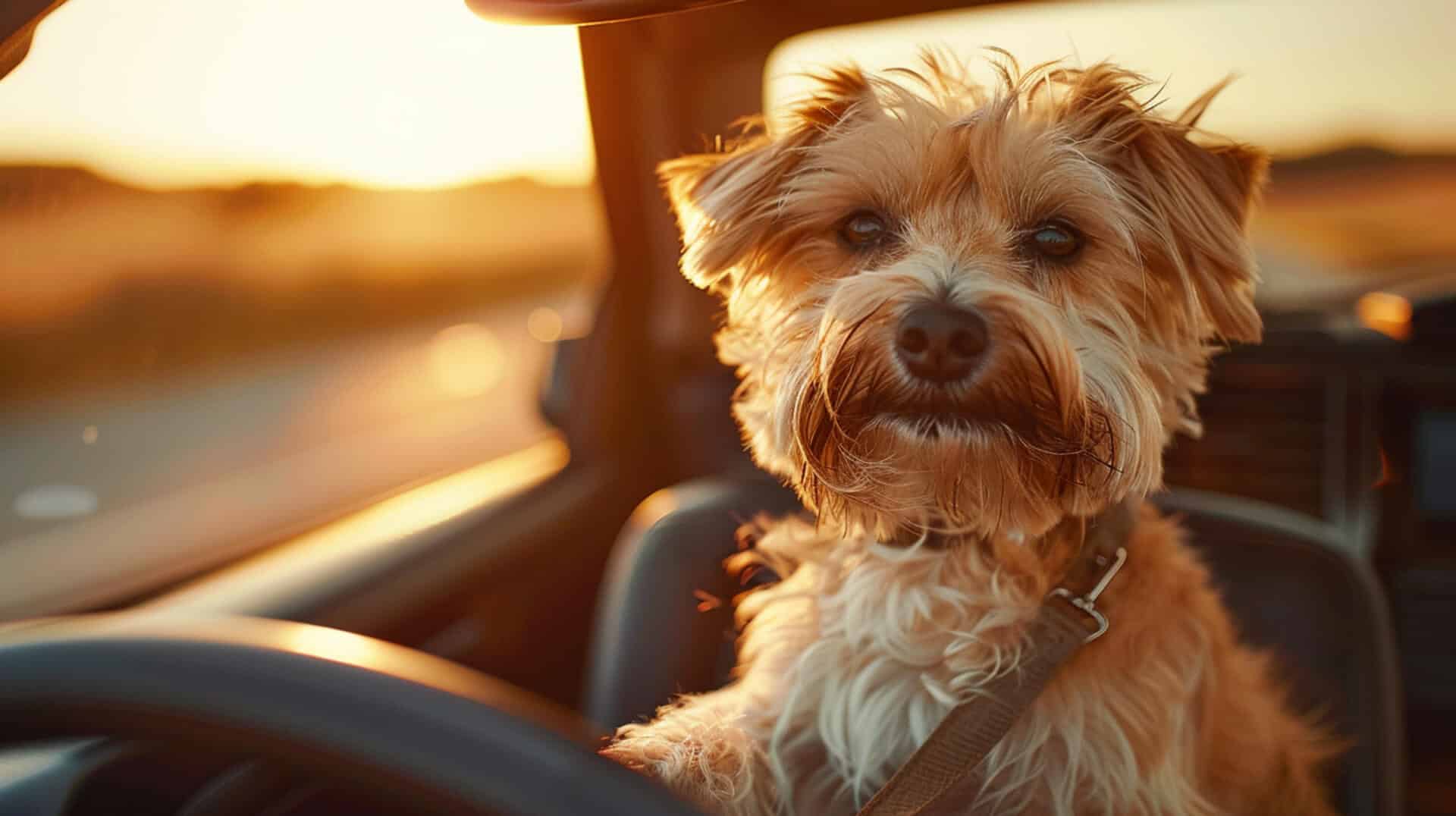
Ensuring the safety of your pet during car journeys is paramount. As a learner driver, it’s crucial to understand the importance of selecting the appropriate restraint for your dog. This not only guarantees their safety but also contributes to a distraction-free driving experience for you.
Legally Approved and Recommended Restraints
The UK Highway Code advises that dogs in vehicles should be properly restrained. The recommended types of restraints include:
- Seat belts for dogs: These are harnesses that attach to the vehicle’s seat belt system.
- Travel crates: Securely placed in the boot or on the seats, these provide a safe space for your dog.
- Dog guards: Installed in the boot of the car, these prevent your dog from moving into the passenger area.
Importance of Choosing the Right Restraint
Selecting the right restraint is essential for several reasons:
- Safety: Proper restraints protect your dog in case of sudden stops or accidents.
- Legal compliance: Adhering to the Highway Code’s recommendations helps avoid potential fines.
- Distraction prevention: Securely restrained pets are less likely to distract the driver.
Ensuring Proper Fit and Security
To ensure the restraint is properly fitted and secure:
- Check the size: Make sure the restraint is appropriate for your dog’s size and weight.
- Follow instructions: Carefully read and follow the manufacturer’s instructions for securing the restraint.
- Regular checks: Periodically check the restraint for wear and tear and ensure it remains securely in place.
Purchasing Approved and Safe Dog Restraints
Approved and safe dog restraints can be purchased from:
- Pet stores: Both physical and online pet stores offer a variety of approved restraints.
- Specialised retailers: Some retailers specialise in travel accessories for pets, including safety restraints.
- Veterinary clinics: Some clinics offer recommendations and sell approved restraints.
At Smart Drive UK, we emphasise the importance of preparing both you and your pet for safe travel. Choosing the right restraint is a critical step in this process, ensuring the safety and comfort of your beloved companion during every journey.
Preparing Your Dog for Car Journeys
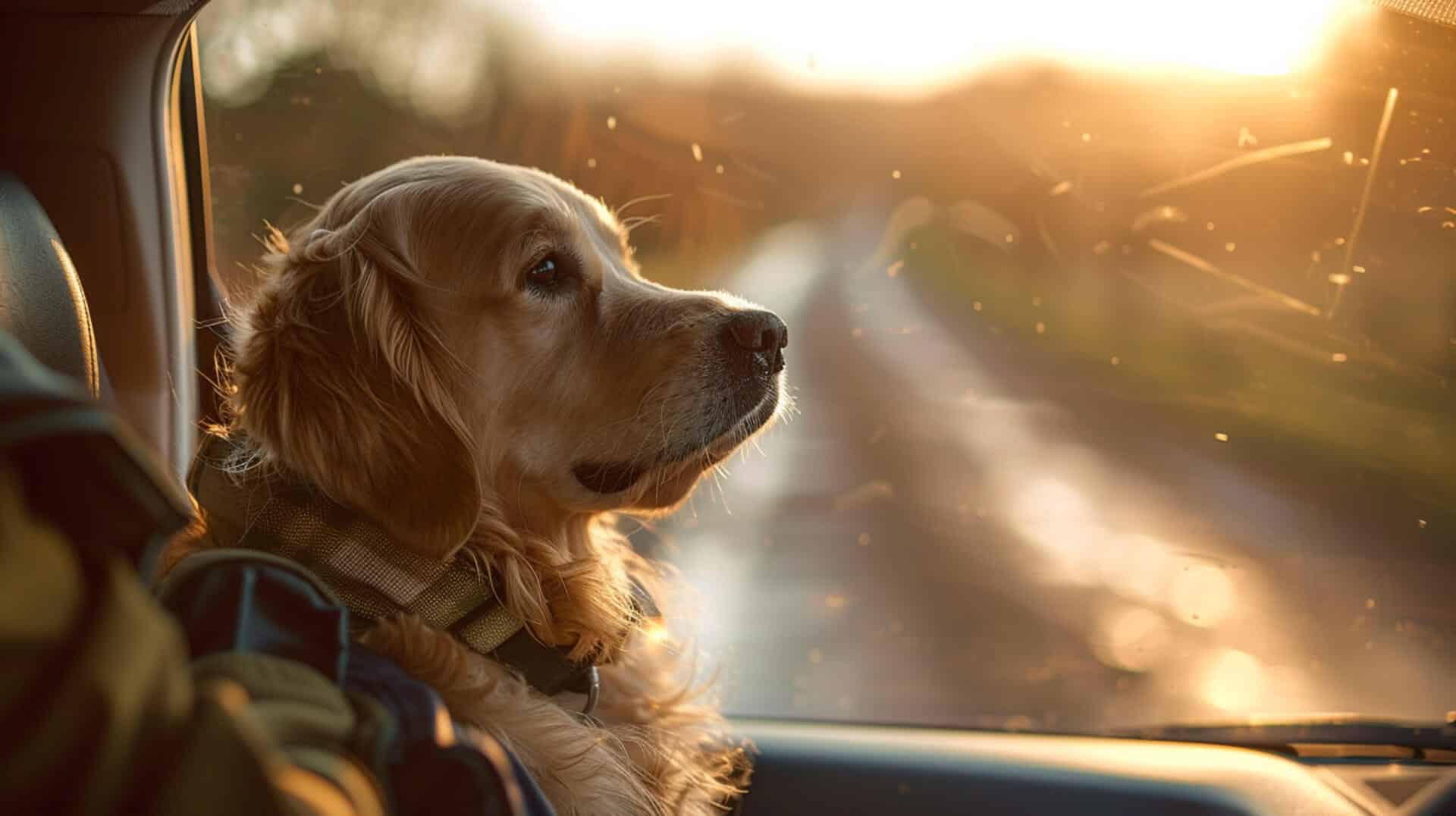
Acclimatising your dog to car travel is an essential step in ensuring a safe and stress-free journey for both you and your pet. As a learner driver, it’s particularly important to minimise distractions and maintain focus on the road. Here, we outline steps to prepare your dog for car journeys and resources for further assistance.
Steps to Acclimatise Your Dog
- Start with Short Journeys: Begin with short trips around the neighbourhood to get your dog used to the car’s movement.
- Use Positive Reinforcement: Reward your dog with treats and praise to associate car travel with positive experiences.
- Ensure Comfort: Make sure your dog has a comfortable space in the car, whether it’s in a crate or secured with a safety harness.
- Regular Breaks: On longer journeys, plan for regular stops to allow your dog to stretch, relieve themselves, and drink water.
Importance of Preparation
Preparing your dog for car journeys is crucial for several reasons:
- Safety: A calm and comfortable dog is less likely to distract the driver.
- Well-being: Reducing stress and anxiety for your dog ensures a more pleasant experience for everyone involved.
Minimising Stress and Anxiety
To minimise stress and anxiety for your dog during car trips:
- Familiarise: Allow your dog to spend time in the car while stationary to become familiar with the environment.
- Comfort Items: Bring along your dog’s favourite toys or blankets to provide comfort and familiarity.
- Calm Behaviour: Remain calm and reassuring to help your dog stay relaxed.
Resources for Training and Preparation
For additional resources or training to help prepare your dog for car travel:
- Veterinarians: Consult with your vet for advice tailored to your dog’s specific needs.
- Professional Trainers: Consider engaging a professional dog trainer for specialised training in car travel.
- Online Resources: Look for reputable websites and forums dedicated to pet travel for tips and advice.
At Smart Drive UK, we understand the importance of ensuring the safety and comfort of all passengers, including our furry friends. By taking the time to properly prepare your dog for car journeys, you’re setting the stage for many happy and safe travels together.
The Impact of Dogs on Insurance Policies for Learner Drivers

When you’re a learner driver, understanding how having a dog in the car can affect your insurance policy is crucial. It’s not just about ensuring the safety of your pet and passengers; it’s also about adhering to the terms of your insurance policy. Here, we’ll explore the key considerations regarding pets and car insurance for learner drivers.
Informing Your Insurer About Travelling with a Dog
It’s essential to inform your insurer if you plan to travel with your dog in the car regularly. Here’s why:
- Transparency: Being upfront about your circumstances helps ensure your policy accurately reflects your driving habits.
- Policy Requirements: Some insurers may have specific clauses or requirements related to pet travel.
Potential Impact on Insurance Coverage
Failing to disclose that you travel with your dog could have several implications:
- Coverage Validity: In the event of an accident, insurers might question the validity of your claim if they were unaware of your pet’s presence.
- Policy Terms: Non-disclosure could potentially breach your policy terms, affecting future claims.
Finding Pet-Friendly Insurance Policies
To find insurance policies that accommodate pet travel:
- Research: Look for insurers that explicitly mention pet travel in their policy documents.
- Ask Questions: When obtaining quotes, ask about their stance on pets in vehicles.
- Compare Policies: Consider any additional premiums or clauses related to pets when comparing policies.
At Smart Drive UK, we understand the importance of comprehensive insurance coverage that takes into account all aspects of your driving experience, including the joy and responsibility of travelling with pets. By choosing the right insurance policy, you can ensure that both you and your furry friend are protected on the road.
Safety Tips for Driving with Dogs
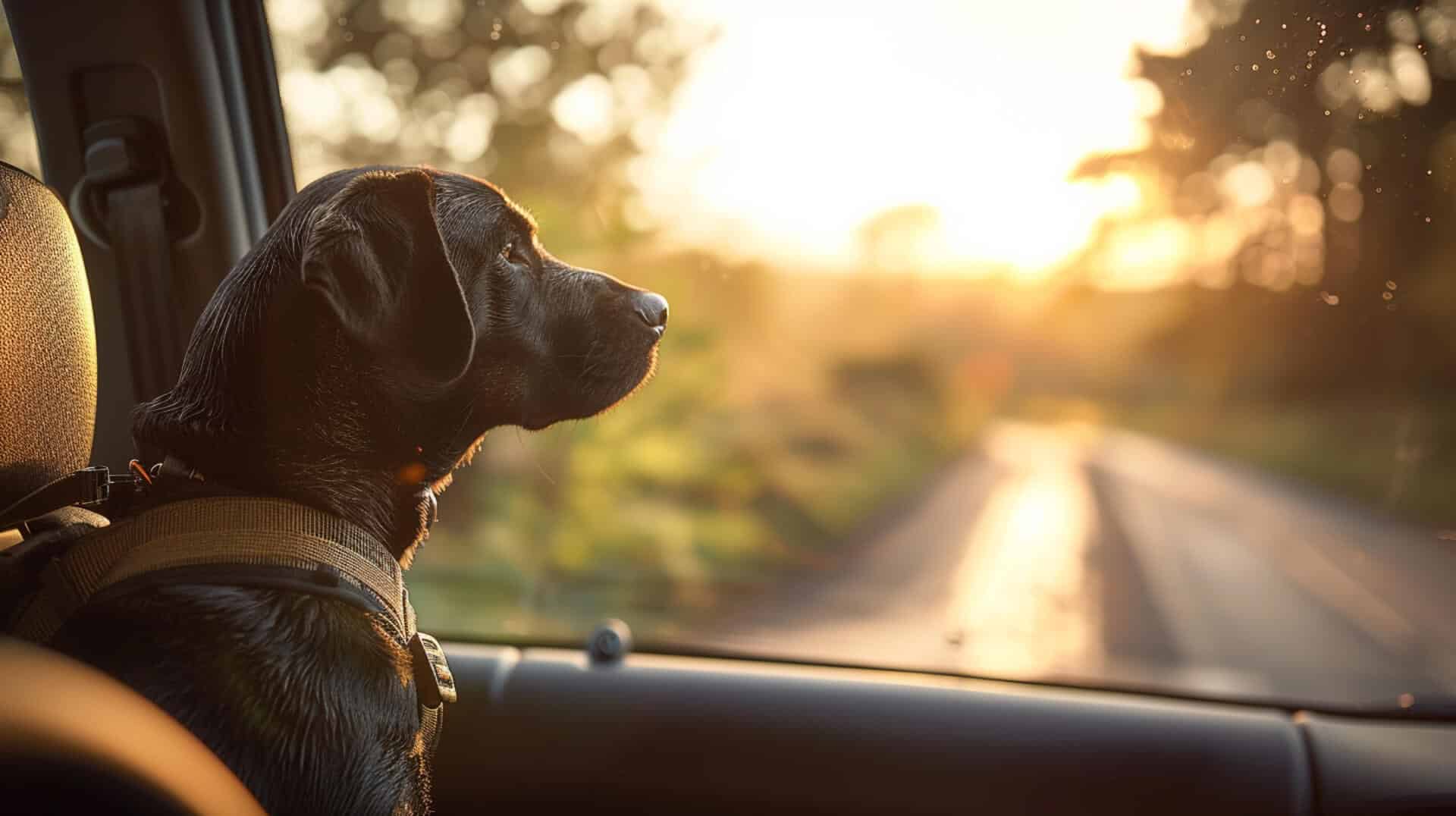
Ensuring the safety of both you and your dog while driving is crucial. For learner drivers, being aware of and adhering to safety tips for driving with dogs is especially important. It not only helps in preventing distractions but also contributes to a safer driving environment. Here, we outline essential safety tips and resources for learner drivers.
Top Safety Tips for Driving with Dogs
When travelling with your dog, consider the following safety measures:
- Use Approved Restraints: Always secure your dog with a crash-tested harness, crate, or vehicle pet barrier.
- Never Allow Pets in the Front Seat: Dogs should be kept in the back seat or boot to prevent them from becoming a distraction.
- Keep Windows Partially Closed: Ensure windows are only partially down to prevent your dog from sticking their head out, which can lead to injury.
- Regular Breaks: On longer trips, take regular breaks to allow your dog to stretch and relieve themselves.
Importance for Learner Drivers
For learner drivers, following these tips is vital because:
- Reduces Distractions: Securely restrained pets are less likely to distract the driver.
- Enhances Safety: Properly following safety guidelines minimises the risk of accidents.
Preventing Accidents and Ensuring Safety
Adhering to these safety tips can significantly reduce the likelihood of accidents by:
- Maintaining Focus: Ensuring your pet is secure allows you to focus on the road.
- Preventing Unexpected Interferences: Restrained pets are less likely to interfere with vehicle controls.
Resources for Detailed Safety Guidelines
For more comprehensive guidelines on pet travel safety, learners can consult:
- The Highway Code: Offers general advice on safely transporting pets in vehicles.
- Pet Safety Organisations: Organisations like the Dogs Trust provide detailed guides on pet travel.
- Veterinary Advice: Your vet can offer personalised advice based on your dog’s needs.
At Smart Drive UK, we emphasise the importance of safety for all occupants in the vehicle, including pets. By following these guidelines, you can ensure a safe and enjoyable journey for you and your furry companion.
Handling Emergencies and Accidents Involving Pets

When you’re learning to drive, being prepared for any situation is crucial, including emergencies or accidents, especially when your dog is in the car. Understanding the steps to take and having a pet emergency plan can significantly impact the safety and well-being of both you and your pet.
Immediate Actions in an Accident
If you find yourself in an accident while your dog is in the car, it’s important to:
- Check for Injuries: Ensure both you and your dog are unharmed. If your dog is injured, avoid moving them unless absolutely necessary to prevent further injury.
- Secure Your Dog: If your dog is not injured, secure them with a leash or in a crate to prevent them from running into traffic or becoming more distressed.
- Seek Veterinary Care: Even if your dog appears unharmed, it’s wise to have them checked by a veterinarian for any hidden injuries.
The Importance of a Pet Emergency Plan
Having a pet emergency plan is essential for several reasons:
- Preparedness: Knowing exactly what to do in the event of an accident can save valuable time and reduce stress.
- Safety: A plan helps ensure the safety of your pet, yourself, and others involved in the accident.
Ensuring Your Dog’s Safety
To ensure your dog’s safety in emergencies:
- Pet Emergency Kit: Keep a pet emergency kit in your car, including water, a bowl, a first aid kit, and any necessary medications.
- Emergency Contacts: Have a list of emergency contacts, including your vet and a 24-hour emergency veterinary clinic.
Resources for Pet First Aid and Emergency Procedures
For training or resources on pet first aid and emergency procedures:
- Veterinary Clinics: Many offer first aid courses for pet owners.
- Online Resources: Websites and online courses provide valuable information on pet first aid.
- Pet Safety Organisations: Organisations dedicated to pet safety often offer resources and training.
At Smart Drive UK, we understand the importance of being prepared for any situation on the road, especially when it involves the safety of your beloved pets. By following these guidelines and having a solid emergency plan, you can ensure the well-being of your furry companion, even in unexpected situations.
Finding Reliable Reviews and Recommendations
Reliable reviews and recommendations for dog restraints can be found through:
- Pet Safety Websites: Websites dedicated to pet safety often provide detailed reviews and comparisons.
- Online Retailers: Customer reviews on online retail platforms can offer real-world insights into product performance.
- Social Media and Forums: Pet owner communities on social media and forums can share personal experiences and advice.
At Smart Drive UK, we understand the importance of ensuring the safety and comfort of all passengers, including pets. By carefully selecting the right dog restraint product, you can make car journeys safer and more enjoyable for both you and your furry friend.
The Psychological Effects of Car Travel on Dogs
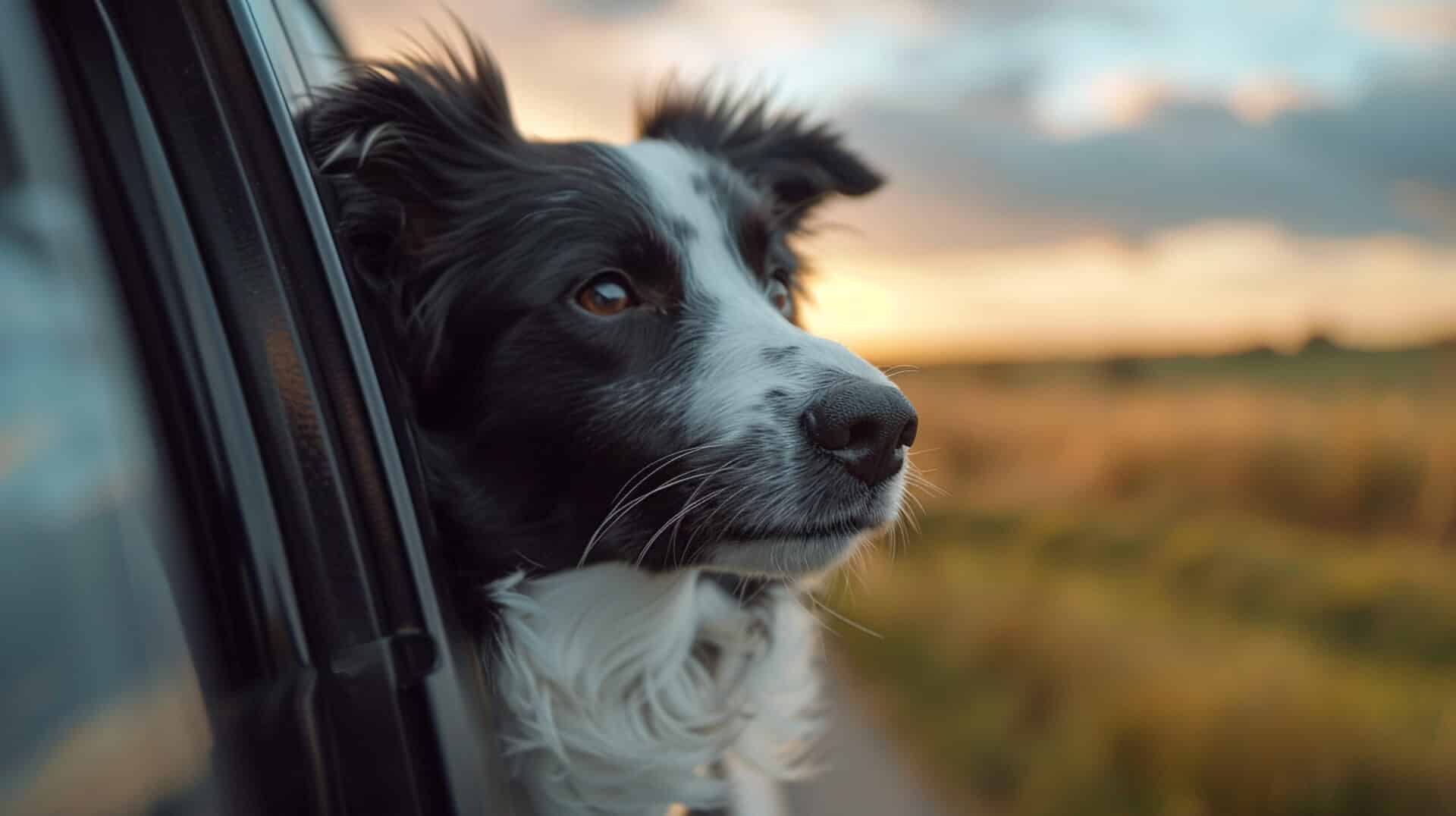
Understanding the psychological effects of car travel on dogs is crucial for ensuring their well-being during journeys. As a learner driver, recognising signs of stress and anxiety in your dog can help you take steps to mitigate these effects, making car travel a more positive experience for both of you.
Common Psychological Effects on Dogs
Dogs may experience various psychological effects during car travel, including:
- Anxiety and Stress: Manifested through panting, whining, or restlessness.
- Motion Sickness: Can lead to drooling or vomiting, contributing to discomfort and anxiety.
- Fear: Unfamiliar environments or the sensation of moving can be frightening for some dogs.
Mitigating Stress and Anxiety
To help mitigate stress and anxiety for your dog during car travel:
- Familiarisation: Gradually acclimate your dog to the car in a positive, stress-free manner.
- Comfort Items: Bring along your dog’s favourite toys or blankets to provide a sense of familiarity and comfort.
- Regular Breaks: Allow for frequent stops on longer journeys to let your dog stretch and relax.
Resources on Dog Behaviour and Psychology
For more information on dog behaviour and psychology related to car travel, consider consulting:
- Veterinarians: Can provide personalised advice based on your dog’s health and temperament.
- Professional Dog Trainers: Offer training sessions to help your dog become more comfortable with car travel.
- Online Resources: Websites dedicated to pet care often feature articles and tips on managing travel-related stress in dogs.
Ensuring Your Dog’s Comfort and Safety
To ensure your dog’s comfort and safety on longer journeys:
- Hydration: Keep fresh water available and offer it during breaks.
- Familiarisation: Include familiar items, such as toys or blankets, to help your dog feel secure.
- Health Checks: Consider a vet check-up before embarking on a long trip to ensure your dog is fit for travel.
Why Smart Drive UK Prioritises Safe Pet Travel for Learner Drivers
Our commitment to promoting safe pet travel stems from our understanding of the unique challenges learner drivers face. We believe that educating and equipping our learners with the knowledge to safely travel with pets not only enhances road safety but also fosters a more enjoyable driving experience for both the driver and their furry companions.
Where to Reach Out
For more information and resources, you can contact Smart Drive UK through:
- Our Website www.smartdriveuk: Visit the contact section for direct inquiries.
- Email – admin@smartdriveuk.co.uk: Send us your questions, and we’ll respond with detailed information.
- Social Media www.facebook.com/SmartDriveUK.UK: Follow us for tips, updates, and direct messaging options.

